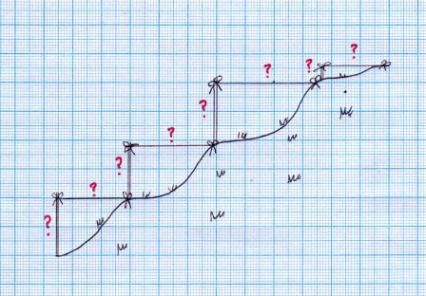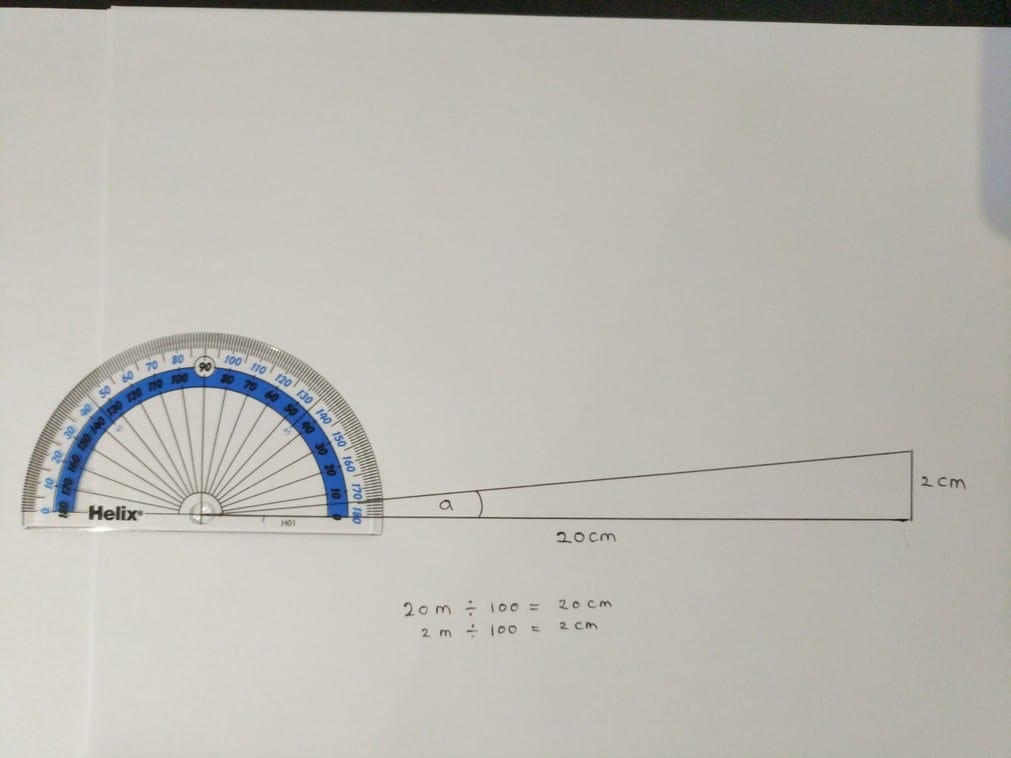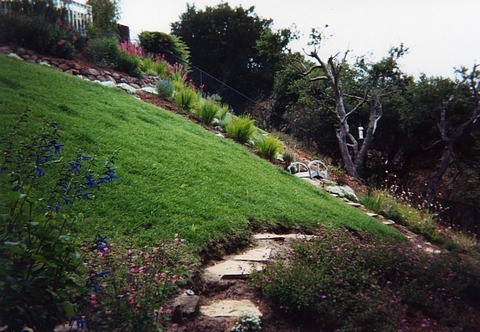For homeowners who have steep slopes in their lawn, you may wish to calculate this slope for a number of reasons. For anyone planning to purchase a robot lawn mower, it is important to ensure that the model you have chosen will be able to handle the steepest slope of your lawn. The slope performance of robot lawn mowers varies significantly. Models available to buy today can handle slopes between 15% and 45% (8.5 degrees to 24 degrees).
It is all very well reading these figures, but what do they mean, and how can you calculate the slope of your own lawn?
What Does Slope Mean?
A slope is defined as a surface where one end is at a higher level than the other. This is stating the obvious, but it’s a neat definition which helps clarify what we are talking about. The units of a slope can be a gradient, expressed as a percentage, or an angle, expressed in degrees.
How Do I Calculate My Slope?
Calculating the slope of your lawn is no different from calculating the slope of a line on a graph or the slope of a ramp or flight of stairs. The essential measurements that need to be taken are the rise of the slope and the run of the slope.
The rise is the difference in height between the top and bottom of the slope, or a defined portion of the slope. The run is the horizontal distance between the start and end of the slope or the marked portion of the slope that you are measuring.
To measure the slope of your garden, you will need the following equipment.
- Stakes, or canes to mark out your slope
- A tape measure
- String
- A spirit level
Steps To Measure Your Slope
1. Put a stake at the highest point of the slope you are measuring and one at the bottom of the slope. If your slope very long, you can choose to pick a representative section of it. You should put markers in the slope every 6-8 feet between the marks at the top and bottom of the slope. Bamboo canes are ideal for this task. Ensure that the change in elevation between each stake is less than the length of the stake. If your lawn is very steep, simply put the stakes closer together.
2. You should then tie a piece of string at ground level to the cane at the top of the slope. Tie the other end of the string to the next stake in the slope. The aim is to ensure that the string is tied so that it is completely flat between the two canes. You will need to use a spirit level and adjust the string until it is level. You should then continue to tie another piece of string to the bottom of the second stake and tie it to the third cane, ensuring this is entirely straight. Continue this process until you reach the bottom of the hill. Make sure that all the strings are level.
3. Measure the length of the string between each stake and add these together. This is the run of the slope. To calculate the rise of the slope, measure from the ground level of the second stake from the top up to the point where the piece of string from the top most stake is tied. Then move to the third stake down from the top, and measure the distance from the bottom of this stake to the point where the sting from the second stake is tied to the third stake. Continue this process until you reach the lowest stake in the slope. Add these measurements together and you will have the total rise of the slope. The image below demonstrates what measurements you need to make. Sometimes a picture can explain things a lot better than words. Make sure your measurements use the same units, or you will risk making an error in the calculation of the slope.

The Gradient Of A Slope
Having calculated the rise and run of the slope of your garden, you can now calculate the gradient of this slope. This is done very simply by dividing the rise of the slope by the run of the slope, ensuring that both of your measurements use the same units. The actual units do not matter. It can be centimetres, metres, feet or whatever you are most comfortable with, but both measurements must be in the same unit. You then multiply your answer by 100, to get the percentage slope. For example, a 2 metre rise divided by a 20 metre run = 0.1. Multiply this by 100 and we get a 10% slope.
The Angle Of A Slope
You can calculate the angle of inclination of a slope by drawing the rise and run of the slope on paper. Use a suitable scale to convert the units of measurement to ones that are more suitable for a page. In the example above, you could divide the 20 metre run and 2 metre rise by 100, to give 20cm and 2cm. Draw this on paper as shown below. Once you have drawn this out, connect the two ends, to create a triangle. The angle of the slope is marked “a” on the drawing below. Use a protractor to measure the angle of your slope in degrees. The example below shows an angle of 5.7°.

There are a number of websites, including this online calculator that will help you to calculate slope and will provide the angle of inclination and gradient for you once you have worked out the rise and run of your slope. This means that you don’t have to wield a protractor if you would prefer not to. Having said that, it is a useful skill to learn to quickly calculate the angle of a slope and is a bit more interesting than using an online calculator.
Don’t Get Mixed Up Between Gradient And Angle Of Inclination
This is an important point, as it is very easy to get the gradient and angle of inclination mixed up and make an error, resulting in purchasing a robot mower will not be able to handle the slopes in your garden. The gradient and angle of inclination are measuring the same thing, but are calculated and expressed in different ways.
As outlined previously,
Whilst many manufacturers will provide both the maximum angle of inclination and gradient for their products, many express the gradient of the slope as a percentage in some marketing material, and the angle of inclination in degrees in other material, which doesn’t help with clarity.

